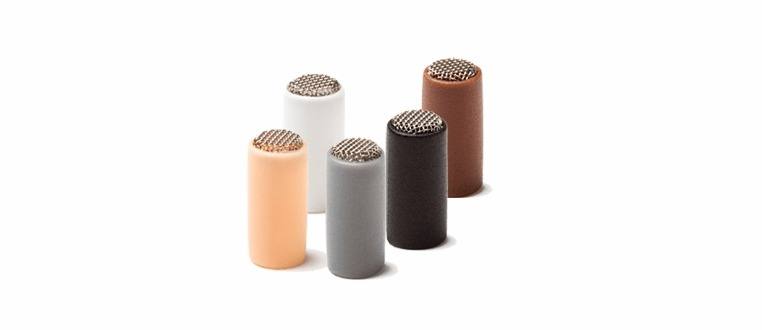Goreproof: Mic’ing Messy Halloween & Horror Performances
With Halloween on the horizon, untold buckets of faux blood and guts are being spilled on stages as we speak. The shock and awe of macabre special effects are all fun and games—until you kill an expensive microphone with a splash of Kensington Gore.
Is Your Microphone Water/Blood-proof? Check the IP rating.
If your performances frequently involve the removal of limbs and heads, you may want to consider investing in gear that’s ready for gore. To make sure that your mics can withstand the moisture, check the IP rating and be mindful of the actual rating and level of protection.
The IP, or Ingress Protection rating, rates the degree of protection provided against intrusion by tools, hands and fingers, dust, accidental contact, and water by mechanical casings and electrical enclosures. The first digit of the two digit rating (e.g. IP 57) represents solid particle protection on a 0-6 scale (dust and objects) and the second digit is for liquid ingress protection and it’s on a 0-8 scale. In both scales, zero equals no protection and the highest number equals 100 percent protection.

When choosing a microphone for performances where there’s water, stage blood, lots of makeup, or even just really sweaty actors you’ll want a mic that’s IP 57 rated. That means it’s nearly dust-proof and can be immersed in up to 1 meter of water for at least 30 minutes. This should cover you during most wet on-stage conditions. Don’t forget to also use watertight mic transmitters or seal them up to prevent them from being damaged. X-Connectors for PSA’s SERIES8 waterproof mics are also available for waterproof transmitters such as the Lectrosonics WM Belt-Pack.
Extra Protection for Waterproof Microphones

So you are going way over the top this Halloween and your actors will be sprayed, splashed, dunked and otherwise soaked on stage Carrie-style. You can further protect mics from moisture by using windscreens. With our waterproof lavalier (CO-8WL), we recommend using our new 2-WSC windscreen caps, with a molded grill which further help disperse water droplets away from the mic element. Neoprene-coated windscreens also work well and are available for most common lavaliers and headsets.

How to Clean Your Waterproof Microphone
Surprisingly, cleaning your microphones is also an opportune way to destroy them. To properly clean your waterproof Point Source Audio mics, use a damp soft cloth to wipe the microphone from earpiece to the tip of the boom to remove moisture and makeup (or stage blood!) after each use. Gently rinse the element to clear any blockage then simply air dry.
DO … let mics air dry with the mic element facing down
DO NOT … use compressed air
DO NOT … dry with heat guns and hair dryers
DO NOT … dry in ovens
Most important of all, have fun putting on your petrifying performances. Happy Halloween from all of us at Point Source Audio!
Read More Articles Like This >> Visit Our SOUNDING BOARD
